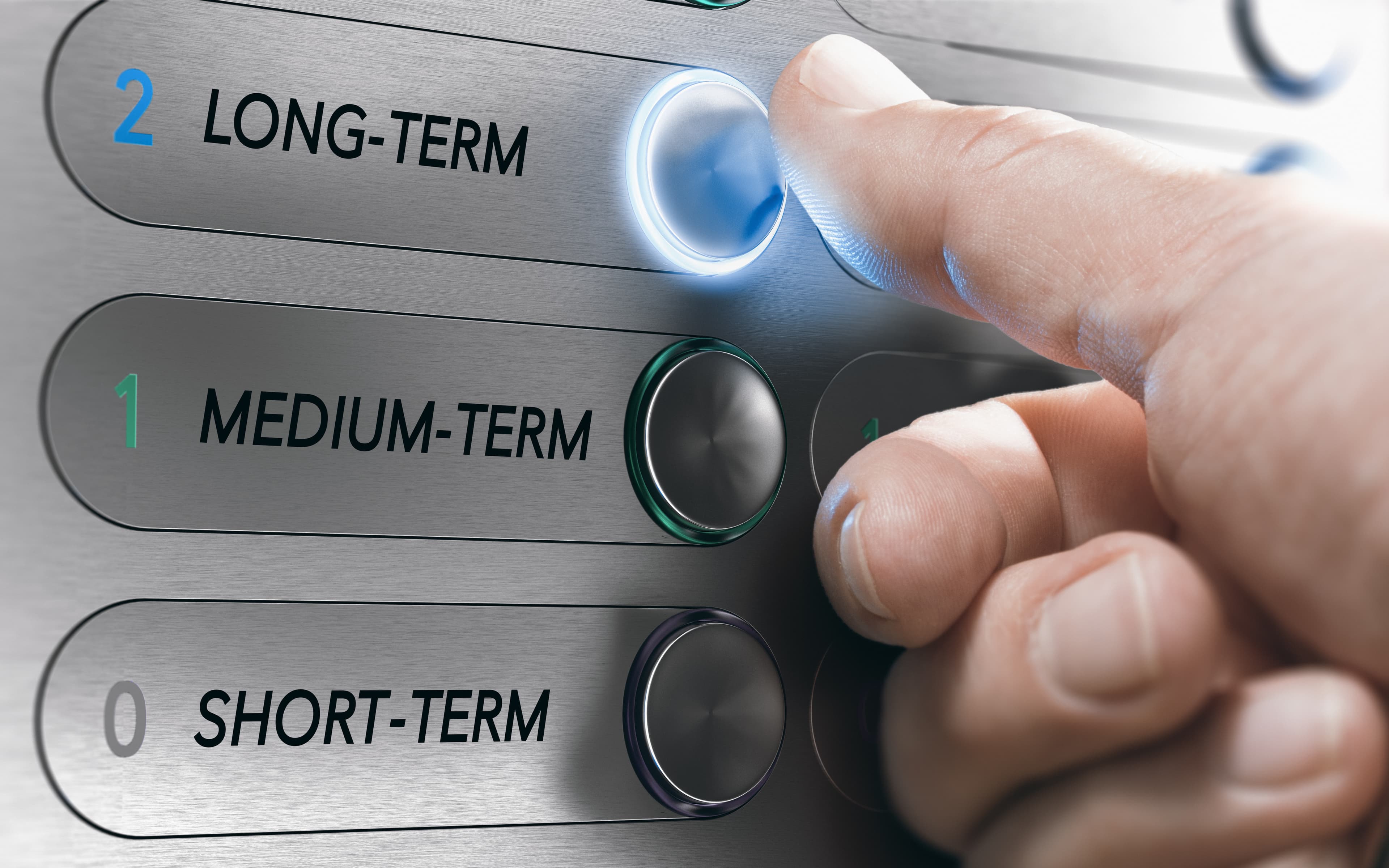5 Reasons Why People Take Naltrexone Long-term

In This Article
Most doctors recommend that patients take naltrexone for six months or longer. There’s substantial evidence that in this timeframe, it can be an effective and safe treatment for alcohol use disorder (AUD). However, after six months, naltrexone’s beneficial impact on managing AUD can continue. Let’s take a look at some of the reasons why people may choose to take naltrexone indefinitely.
Why Take Naltrexone for a Specific Time?
Naltrexone is considered a first-line treatment for AUD. When taken for longer durations, it can be part of someone’s long-term recovery plan. It’s usually regarded as safe to take long-term. The side effects of naltrexone are short-lived and typically mild, with few contraindications. However, those with liver disease or people who use opioids cannot take naltrexone. You should always ask your provider about the recommended length of time based on your medical history.
First things first: breaking a habit and rewiring your brain takes time. When considering how long you should take naltrexone, it’s essential to remember AUD is a brain disorder, and addiction causes brain changes. Someone with AUD likely experiences cravings after a stressful moment, seeking the pleasurable effects of alcohol to combat distress. Over time, this can create a pattern change in brain circuitry. This is why brain scans of those with AUD show differences from those without the disorder.
AUD hijacks the brain’s reward system. By blocking opioid receptors, naltrexone helps reduce the reward neurotransmitter dopamine, or the “feel-good” response after a drink. Over time, this allows the brain to rewire and no longer seek the same reinforcement through drinking. Reducing the activity of these neurotransmitters can help lead to a sustained reduction of cravings. Again, changing the brain’s neuro-pathways takes time.
AUD also impacts the brain’s grey matter, which is essential in all aspects of functioning: information processing, memory, and emotion. One study found that grey matter in the brain takes six months to a year to return to normal after the effects of AUD. A notable point is that the study’s researchers found an increase in grey matter more than normal or baseline after a year (1).
Facilitating brain changes by utilizing naltrexone is significant. But what are other reasons that people with alcohol abuse continue to use naltrexone for the long run?
1. It Can Make Moderation More Achievable
Drinking less can be a lifelong goal. Naltrexone is particularly helpful in aiding people to reduce their drinking (2). For those who seek to utilize naltrexone for alcohol reduction, the medication can help people create healthier and more sustainable relationships with alcohol over time.
People can decrease their health risks when using alcohol in moderation. Ensuring a reduction in drinking can minimize alcohol-related injuries and lead to better relationships and work life.
When following The Sinclair Method, one methodology to moderate drinking, the rule is to always take naltrexone one hour before drinking. This gives the medicine time to work. When someone uses naltrexone consistently before drinking, their cravings and urges to drink more dissipate over time.
2. Prevention: You’ve Found That Naltrexone Works for You
Finding the proper treatment that leads to abstinence or alcohol reduction can take years and is often a challenging road. If you’ve tried other forms of treatment before naltrexone without achieving the goals you set for yourself, you might choose to continue a treatment program that has been proven to work for you. If naltrexone has been helpful, long-term usage can help sustain alcohol reduction or cessation goals. A working form of support can produce a better treatment outcome.
3. Naltrexone Can Help You Stay Committed To Your Goal
Taking naltrexone every day can be a radical act of self-care, affirming your commitment to stopping or reducing alcohol. Just like everyday self-care practices like journaling, exercising, or eating well, naltrexone can help you achieve your goal and lead to improved quality of life.
Naltrexone shores up recovery. Over time, the medicine can help break the cycle of dependency. One study purports that if someone has sporadic heavy drinking in the first couple of months when using naltrexone, they should continue the treatment for a prolonged period (3). In contrast, prematurely discontinuing treatment can render it ineffective.
4. Naltrexone Can Help Prevent Relapse
AUD is a chronic condition. This means that though recovery is possible, AUD can be ongoing and could require ongoing support. Relapse in recovery is not uncommon. Naltrexone is shown to reduce relapse rates after abstinence (4).
A meta-analysis showed naltrexone reduced the likelihood of relapse in heavy drinking by 36% (5). One way that naltrexone reduces relapse rates is by curbing alcohol cravings over time. The medicine can also lead to behavior changes, which can further decrease the likelihood of relapse in the future.
Those with co-occuring mental health conditions experience higher relapse rates. Knowing someone’s medical history can help them make an informed decision on a preventative protocol for relapse.
5. Using Naltrexone Can Provide a Sense of Ease
Taking naltrexone in the long term can limit the constant worry of “falling off the wagon.” When taking naltrexone you’re utilizing a time-tested treatment method. The longer you’re either sober, or in control of your drinking, the better your chances of a sustained, long-term recovery.
The positive impacts of naltrexone might seem scary to put at risk. Over time, these impacts can profoundly improve someone’s life through better physical and mental health, work, and relationships. Continuing naltrexone can offer a sense of ease—you don’t have to gamble on recovery.
Continuing to take naltrexone does not mean that your recovery method is not working. It means you’ve found a tool to continue recovery, whether that means moderation or abstinence from alcohol. How long you decide to take naltrexone is based on you. Ultimately, you and a doctor or an alcohol treatment specialist can determine whether continuing to take naltrexone is right.
With naltrexone, recovery is a marathon, not a sprint. Taking the medication can help you sustain the goal of reducing or stopping drinking. Addiction is chronic; it can provide peace of mind to have long-term treatment in place.
About The Author
Xenia Ellenbogen (she/they) is a journalist specializing in health, mental health, and wellness. Her writing has appeared in publications such as Everyday Health, Well+Good, Rewire News Group, Prism, and more.
Related Articles
- How It Works
- Alcohol & Health
- Alcohol Misuse & Alcohol Use Disorder
- Strategies to Drink Less or Quit
- Treatment Options
- Medication-Assisted Treatment
- Recovery Stories
- Member Stories
- Moderation Stories
- Sobriety Stories
- ¹ Oar Health membership plans include access to the Oar Health platform, virtual consultations with a healthcare professional, and medication if prescribed by a healthcare provider. 3 month membership plan costs $297, equating to $99/mo.
- ² Self-reported by members after 6 months of Oar Health membership.
- ³ Verywell Health survey of Oar Health members, published March, 2023.
- ⁴ Prescription medication is available only if prescribed by a licensed clinician.
- ⁵ Compounded medications are prepared based on a prescription from a healthcare provider. They are not reviewed by the FDA for safety or efficacy.






